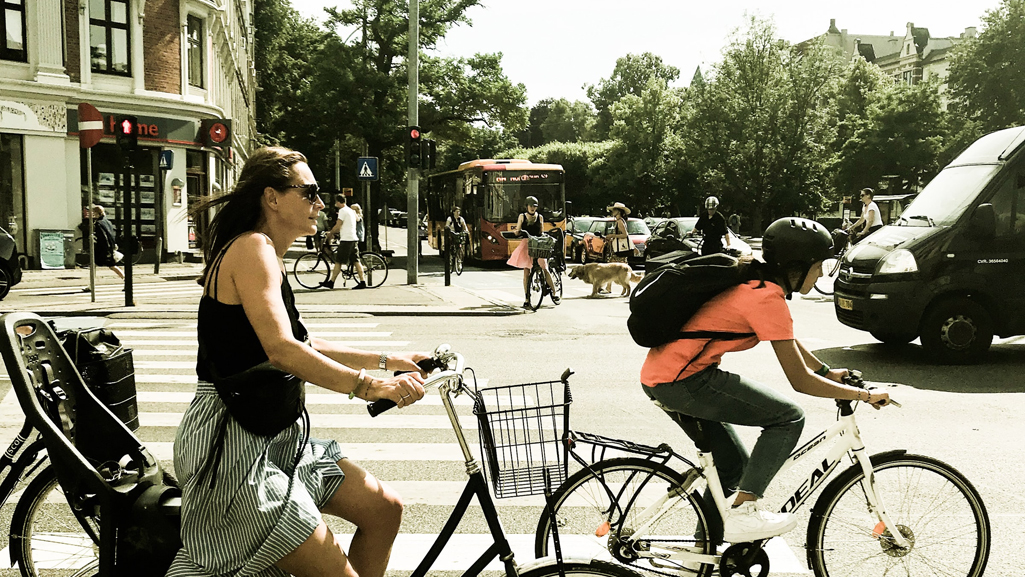The Corona crisis has influenced all possible areas of life – including personal mobility. People are riding their bicycles and walking more, which allows them to be independent and also helps the environment. The risk of infection is also smaller as compared to public transport. Cities such as Bogota, New York, and Berlin have set up pop-up bicycle paths, Brussels is even making headlines with its Velorution. Experts have long recognized the benefits of non-motorized forms of transport, for it’s time to transform traffic. The German federal government has been promoting bicycle traffic as part of its agenda since 2002. The new National Cycling Plan 3.0 is supposed to boost cycling and to take bicycle traffic in Germany to a whole new level.
The first National Cycling Plan (NCP) from 2002 was replaced by the NCP 2020 in 2013. Since then more than 220 projects have been supported, to the tune of EUR 5 million each year. These funds are supposed to make bicycle traffic more attractive and safer, so that the share of bicycle traffic as part of the modal split, that is, the total traffic volume, grows step by step.
How to become more bike-friendly
Starting in 2021, Version 3.0 will turn Germany into a true biking country. For the German federal government wants to boost cycling and make it more attractive and safer.
In particular, bicycle traffic has benefited from the climate package passed in October 2019. The German federal government decided to exploit the additional potential of bicycle traffic and work with states and communities to significantly expand the cycle networks. The goals are that everyone should feel safe on these networks and that it becomes possible to go nearly anywhere on a bicycle. For this, the program to boost cycling will make available nearly EUR 1.4 billion by 2023, much more than at any time previously.
“National boost cycling plan”: Everything is ready for Version 3.0
With the NCP 3.0, Germany wants to take another step and provide additional inspiration for more bicycle traffic. The process incorporates experts and citizens into the development of the new NCP. After the online survey in early summer 2019 followed a dialog forum with experts. The NCP 3.0 is currently being developed using these survey results.
“In the dialog forum, experts from the areas of science, business, organizations, public administration, and civil society discussed the goals of the new NCP and the measures with which it should be achieved. In the process, of course we oriented ourselves according to the key objectives of the NCP,” says Annette Kindl, who – with the experts at PTV, ifok, and the Fraunhofer ISI – is helping to draft the plan.
Eight key objectives for the “bicycle country Germany”
- Seamless bicycle traffic in Germany.
- Vision zero in bicycle traffic.
- (Urban) traffic will become bicycle traffic. Last-mile delivery will be done without generating emissions.
- Germany will become a bicycle commuter country.
- Reinforcement of Germany as a bicycle location. Bicycle business will be promoted, the image of and knowledge about bicycle traffic improved.
- Bicycle traffic will be intelligent, smart, and networked. Planning of infrastructure and traffic control will be optimized with appropriate data, mobility offerings will be networked.
- Bicycle traffic will conquer city and country.
- The bicycle as the center of modern mobility.
Riding bicycles in Europe’s cities
A few European cities have long since achieved many of these goals. Cities, where people recognized many years ago that active forms of mobility are more environmentally friendly. They contribute to reducing traffic and ensure more socially just participation in mobility. Those cities provided early on the corresponding infrastructure, for example, as in Copenhagen or Amsterdam.
As you can see from the study Living. Moving. Breathing., in cities where people are at the center of planning, more people walk and ride bicycles. This means, it is essential to create the right conditions – in politics as in infrastructure. According to the study, cities such as Amsterdam and Copenhagen are way out in front when it comes to riding bicycles. Interesting: In Amsterdam, more people ride bicycles (32 %) than walk (31 %); in Copenhagen, there is a 10% difference. And Berlin occupies a leading place when it comes to the share of active mobility. However, here many more people walk (31 %) than bicycle (13 %). In Paris, people also walk a lot (41%), but the city lags behind with regard to bicycling (3%), along with cities such as London (2%) and Rome (1%). But Paris has decided to become much more bicycle-friendly.
According to the Copenhagenize Index 2019, Copenhagen has now overtaken Amsterdam as the most bicycle-friendly city. The other top 20 bicycle-friendly cities around the world include Bogota, Tokyo, Taipei, Vancouver, and Montreal. The most bicycle-friendly city in Germany is the location of PTV’s headquarters, Karlsruhe.
Bicycling in the country
Promoting bicycle traffic is not just an urban topic. In outlying and rural areas, bicycle traffic is not only part of the tourist offerings. Increasingly, it’s becoming part of everyday life. Thus, in its position paper, the German Association of Rural Districts [Deutscher Landkreistag] argues that bicycle traffic has to become the cornerstone of a long-term mobility transformation, even in outlying areas. And this isn’t the only reason why the NCP 3.0 will confront the particular challenges of bicycle traffic in outlying areas.
So, what’s next?
Currently the project team is working closely with the German Federal Ministry of Transport and Digital Infrastructure on the formulation of the NCP 3.0. The discussions in the dialog forum form the basis for this. In the end, the national bicycle strategy will run through various rounds of participation and agreement in the federal departments before it is proposed to the cabinet and then published.

very nice an informative thanks.